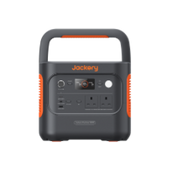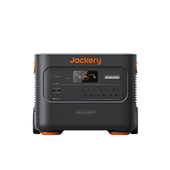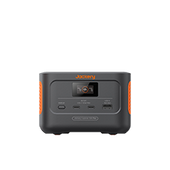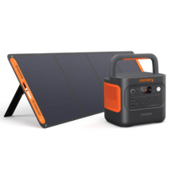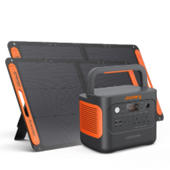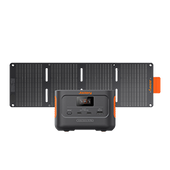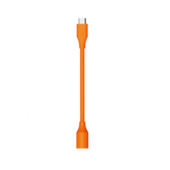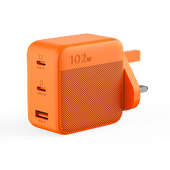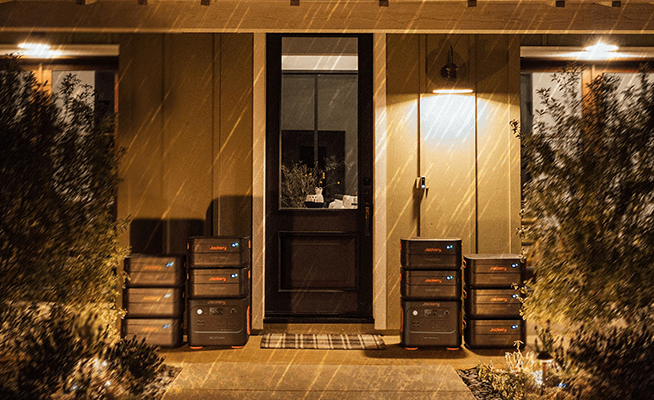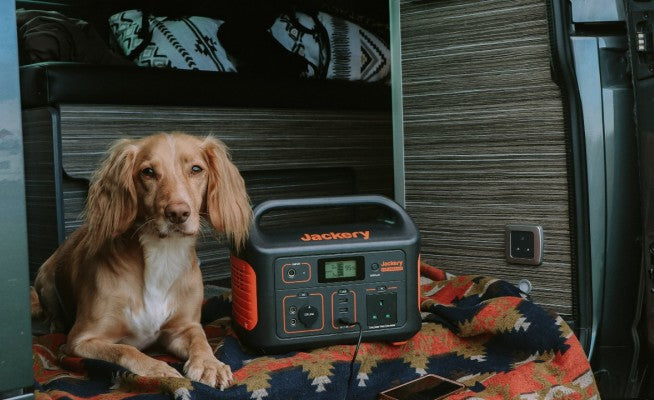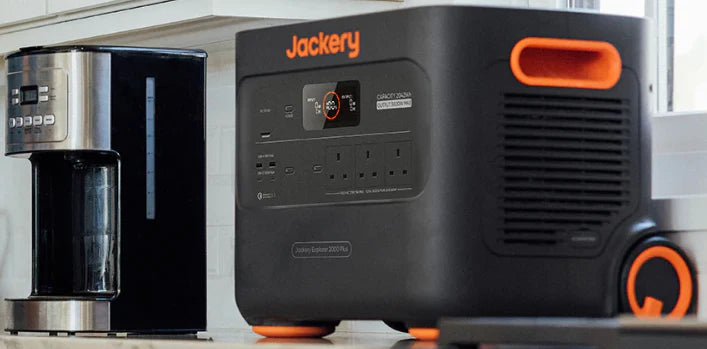Your gas meter may usually record gas consumption in cubic meters, but your gas bill is paid in kilowatt-hours. Therefore, converting gas units from m3 to kWh is generally necessary to assess gas usage and costs accurately.
Whether you are an ordinary user or a commercial user, converting m3 to kWh is crucial to ensure accurate billing and energy consumption tracking.The following content explains the reasons, specific steps, application scenarios, and some aspects to consider when converting m3 to kWh.
|
Key Takeaways: |
|
What are m3 and kWh?
m3 and kWh are two units used to measure different physical quantities. Understanding them will help you describe and calculate related physical quantities more accurately in your daily life, work or study.
What is m3?
m3 is the symbol for cubic meter and is a unit of volume in the International System of Units. It represents the size or capacity of a dimensional space. For example, the volume of a cube with a length, width and height of 1 meter is one cubic meter (1 meter × 1 meter × 1 meter = 1 cubic meter). A simpler analysis is that it is a unit to measure how much space is occupied. In the metric gas meter in the UK, m3 is the unit of your natural gas consumption.
Here are some common uses of m3:
Measure the consumption of gases such as natural gas and coal gas.
Measure the volume of liquids such as water and oil.
Measure the volume of solids such as sand and wood.
What Is kWh?
kWh is the symbol for kilowatt-hour, a unit of energy and a derived unit of work or energy. It represents the energy consumed (or generated) by a device with a power of 1 kilowatt running continuously for 1 hour. In simple terms, kWh is a unit of measurement for how much energy is used, especially in electricity. To maintain consistency, kWh is not only a unit of measurement for electricity, but also a unit used by energy companies when calculating other energy costs.
Here are some common uses of kWh:
Measures electrical energy consumption, indicating the amount of electricity used over time.
Indicates other forms of energy output, such as energy stored in batteries.
The power generated by solar panels and wind turbines is calculated in kWh.

Why Convert m3 to kWh?
Why do gas meters measure volume in m3, but energy bills are charged in kWh? Why do you need to convert m3 to kWh? This conversion is not only about converting units of measurement, but also a key part of energy management and accurate billing. Here are a few main reasons to convert m3 to kWh:
Gas Meters Measure Volume, Not Energy
Gas meters measure the volume of gas flowing through, not the energy content. For example, a metric gas meter measures m3, which tells you how many cubic meters of gas you used. However, as a consumer, you pay for energy, not volume. You need hot water, heating, and cooking, which are all energy-driven.
Accurate Billing
Converting m3 to kWh can be a universal metric to calculate energy costs, achieving fair and transparent billing. However, different qualities of natural gas may have different energy densities.
For example, the same volume of natural gas releases different amounts of heat after combustion due to temperature, pressure, etc. If the energy supplier charges by volume (m3), when you receive natural gas with a high calorific value, you get more energy per cubic meter, and it is cost-effective to pay the same price.
However, natural gas with a low calorific value provides less energy per cubic meter, and even at the same price, you lose out.
Convenient Comparison with Other Energy Sources to Compare Usage and Costs
If your home uses electricity, natural gas, fuel oil, etc., simultaneously, you can calculate the total energy consumption by converting all energy consumption into kWh. For example, after converting natural gas consumption to kWh, you can intuitively compare the cost difference between using 1 kWh of natural gas and consuming 1 kWh of electricity.
How to Convert m3 to kWh?
A metric petrol meter displays phrases such as cubic meters or m3. This means converting is more straightforward than using an imperial petrol meter. Because m3 is a volume unit and kWh is an energy unit, converting m3 to kWh typically requires an energy conversion. The following steps will convert the gas units (m3) on a metric gas meter to kilowatt-hours (kWh):
Step 1: Determine the Volume of Gas
If you are calculating your gas usage over some time, subtract the last reading from the meter reading. This will tell you how many cubic meters (m3) of gas you used during that period. You can usually find your gas meter outside your house or in the kitchen. When reading, ignore any red numbers or numbers in red boxes and only record the whole number in the black or white boxes.
Example 1: If your last meter reading was 100 cubic meters and the current reading is 240 cubic meters, your gas consumption during this period is 140 cubic meters (240 - 100 = 140).

(Data Source: Selectra)
Step 2: Determine the Calorific Value
Looking up your energy bill is the most accurate and recommended way to get the calorific value. Your gas bill will usually state the calorific value of the gas you use, which is generally expressed in kWh/m3 or MJ/m3.
The calorific value varies slightly from region to region and from season to season, and the average calorific value provided on your bill is the actual calorific value of the gas you use.
If it is not on your bill or cannot be found, contact your gas supplier directly to ask for the average calorific value of the gas they supply. You can use 40.0 as a default calorific value if you do not have an exact number.
Step 3: Determine the Volume Correction Factor
The volume correction factor means that the effect of temperature, pressure, and atmospheric conditions in your home on the volume of gas is considered when converting m3 to kWh. Unless your home has unusual atmospheric conditions, a conversion factor of about 1.02264 is usually used for this calculation.
Step 4: Know the Kilowatt-Hour Conversion Factor
Convert thermal energy in megajoules per cubic meter (MJ/m3) to kWh/m3 if necessary. To convert megajoules to kilowatt-hours, divide by 3.6 since 1 kWh equals 3.6 MJ.
Step 5: Perform the Conversion Calculation
Once you have completed all the steps above, converting m3 to kWh is as simple as plugging the relevant data into the conversion formula. To convert m3 to kWh, use this formula:
Gas consumption (kWh) = Gas consumption (m3) × Calorific value (usually 40.0) × Volume correction factor (1.02264) ÷ kWh conversion factor (3.6)
Example 2: Based on Example 1, the gas consumption is 140 cubic meters, which is approximately equal to 1591kWh (140 × 40.0 × 1.02264÷3.6 ≈ 1591kWh).
Alternatively, you can use online conversion tools such as Utilitiessavings and Energylinx to simplify the conversion process. These tools simplify the calculations by automatically applying various relevant data, allowing users to quickly and accurately convert cubic meters to kilowatt hours. If you want to convert m3 to a more accurate kWh, it is best to consult your energy supplier when obtaining the data involved in the conversion process.
What Should Be Paid Attention to When Converting m3 to kWh?
When converting gas usage in m3 to kWh, there are a few key aspects to keep in mind to ensure accuracy:

Accurate Gas Usage
The correct reading of the gas meter is the basis for the conversion. Knowing if your gas meter is a metric meter, which measures in m3, is essential. Reading the meter is relatively simple: Read the numbers from left to right. Note that the only numbers you need to record are black; ignore any red numbers.
Accuracy of Calorific Value
It is impossible to make a precise conversion without an accurate calorific value. Different suppliers may provide different gas compositions, resulting in different calorific values even for the same type of natural gas. Therefore, it is essential to use the current average or calorific value data for a specific period provided by the supplier. Calorific values are usually given in megajoules per cubic meter (MJ/m3).
Unit Consistency
When converting, ensure all input units are consistent to avoid problems caused by mismatched units. For example, cubic meters (m3) represent gas volume and hours (h) represent time. If necessary, convert the associated data to the appropriate units before substituting it into the formula. For example, if you're using an imperial petrol meter with a cubic feet value, multiply by 0.0283 or divide by 35.315 to get cubic meters.
Reliability of Data Source
The source of data has a direct impact on the reliability of the conversion results. It is recommended that the most recent calorific value data published by a reputable organisation be utilised rather than old or regional data. Energy conversion requirements in various countries or locations may differ slightly. It is advisable to start with local official or industry standards. You should utilise the current average or calorific value data from a specific period provided by your local gas supplier. This information can generally be found on the gas bill, the supplier's website, or by contacting the company directly.
When Do You Need to Convert m3 to kWh?
The need to convert m3 to kWh mainly arises when converting the consumption of a certain fuel into the energy value contained or released by it. The conversion of m3 to kWh is primarily for energy calculations, cost comparisons or efficiency assessments. The following are some specific scenarios where m3 needs to be converted to kWh.

Gas Billing
Natural gas is usually measured in cubic meters, but energy suppliers bill by energy consumption in kWh. Therefore, when users need to understand bills, calculate energy costs, or make budget planning decisions, they must convert the volume of natural gas to kWh.
Comparison of Costs of Different Energy Sources
When comparing the cost of running the same equipment using different energy sources, such as natural gas, LPG, diesel, electricity, etc., it is necessary to convert the consumption of all energy sources into equivalent kWh energy values and then multiply them by their respective unit prices. For example, suppose you want to compare whether it is more economical to use natural gas or electricity for heating. In that case, you need to convert the volume of natural gas consumed into the kWh it can provide to make a fair comparison.
Equipment Energy Consumption and Efficiency Assessment
While the energy consumption of most electrical appliances is displayed in kWh, some gas-powered appliances are recorded in m3/h, which is difficult for many people to understand. If you want to calculate how much energy a gas boiler consumes when running for some time, you can express it in kWh, which is easier for most ordinary people to understand.
International Energy Trade
In energy trade, different units of measurement may be involved when trading commodities such as natural gas between countries. Therefore, standardising the units of measurement in international trade and trading contracts will ensure the fairness and compliance of contract terms. International agreements often use kWh as the same unit for settlement.
Assessment of Renewable Energy Systems
In renewable energy, kWh is usually used to evaluate its power generation capacity. For example, an ordinary solar panel system generates about 2000kWh of electricity annually. Similarly, converting volume and energy is critical in renewable energy projects such as biomass and hydrogen. For example, the volumetric output of biogas needs to be converted into energy output (kWh) to evaluate the power generation or heating potential.
Jackery Portable Power Stations Explained
When discussing Jackery Portable Power Stations, kWh (kilowatt-hour) is the most crucial unit for understanding their capacity and how they can save money on electric bills.
The Jackery Portable Power Stations' battery capacity is measured in watt-hours (Wh). This is often converted to kilowatt-hours (kWh) for larger models to make the number more manageable and comparable to household energy consumption.
The kWh capacity of a Jackery Portable Power Station directly tells you how much energy you can store and use. This is the key to calculating your potential savings and the time the generator can power your devices.
Jackery Explorer 3000 v2
The Jackery Explorer 3000 v2 is a powerful portable power station, and understanding its kilowatt-hours (kWh) capabilities is key to knowing what it can do for you. The Jackery Explorer 3000 v2 has a battery capacity 3072Wh, equivalent to 3.072 kWh. This is a significant amount of stored energy for a portable power station, placing it in a category suitable for more demanding applications than smaller units.

Extended Run Time for Essential Appliances: With this capacity, the Explorer 3000 v2 can power many household essentials for a considerable time. For example, a typical 200W refrigerator could run for over 15 hours on a full charge (3072Wh/200W≈15.36h).
Handling High-Wattage Devices: The 3000 v2 has a continuous output of 3600W and a 7200W surge peak. This means it can hold appliances with high startup wattage, like air conditioners, microwaves, and power tools, that would quickly overload a smaller power station.
Home Backup and Off-Grid Use: Its 3 kWh capacity makes it a viable solution for providing essential home backup during a power outage. It lets you keep lights, a refrigerator, a Wi-Fi router, and a few other devices running for a day or two. It's also well-suited for extended off-grid living in an RV or cabin, where you need a substantial energy reserve.
Fast Charging: The Explorer 3000 v2 supports quick charging to manage its large capacity. It can be fully recharged from a wall outlet in as little as 1.8 hours, and 1.4 hours by AC + DC charging. This is a crucial feature, as a large capacity is only helpful if you can quickly replenish it.
Jackery Explorer 2000 Plus
The Jackery Explorer 2000 Plus's core energy identity is best understood through its kilowatt-hour (kWh) capacity. This measurement goes beyond simple wattage and provides a comprehensive view of how much power the unit can store and deliver over time, which is critical for home backup, off-grid living, and large-scale applications.

Base Capacity: The Jackery Explorer 2000 Plus has a base capacity of 2042.8 Wh, approximately 2 kWh. This means that out of the box, the unit can supply 1,000 watts of power for about 2 hours, or a 100-watt device for about 20 hours. This substantial amount of energy can handle various needs, from running a portable air conditioner for a couple of hours to keeping a refrigerator and a few lights on for an entire day during a power outage.
Massive Expandability: What truly sets the 2000 Plus apart is its modularity. Its capacity isn't fixed at 2 kWh. You can add up to five additional battery packs, each with a capacity of 2 kWh, to the central unit, increasing the total capacity to 12 kWh.
Whole-Home Backup: A 12 kWh system can power a typical household for several days, keeping essential appliances like a refrigerator, freezer, lights, and even a well pump or sump pump operational during an extended blackout.
Long-Term Off-Grid Living: This expandable capacity means that RVers, campers, or anyone living off the grid can have a reliable power source for an extended period without recharge, making it a viable alternative to a noisy and fuel-dependent gas generator.
Long-Lasting and Safe LiFePO4 Battery: The Explorer 2000 Plus utilises a Lithium Iron Phosphate (LiFePO4) battery, which offers significant advantages over other lithium-ion chemistries. LiFePO4 battery is rated for a much higher number of charge cycles (up to 4,000 cycles to 70%+ capacity). This means the power station is built to last for over a decade and is regularly used, providing reliable power for the long term.
FAQs
The following are frequently asked questions about m3 to kWh.
1. How do you convert m3 to kWh?
If you want to convert m3 to kWh, you can follow these steps:
Step 1: Read the meter reading.
Step 2: Subtract the old meter reading from the new reading to calculate the amount of natural gas used.
Step 3: Multiply by the volume correction factor (1.02264).
Step 4: Multiply by the calorific value.
Step 5: Divide by the kWh conversion factor (3.6).
2. How many kWh are in a m3?
Although knowing exactly how many kWh are in a m3 is difficult, you can get an approximate value using the formula. Plug an m3 into the following formula:
Gas usage (kWh) = Gas usage (m3) × Calorific value (40.0) × Volume correction factor (1.02264) ÷ kWh conversion factor (3.6) (1 × 40.0 × 1.02264 ÷ 3.6≈11.36)
So, after the above conversion, you can know that a m3 equals 11.36kWh.
3. How do I convert gas units to kWh?
First, you need to check whether the type of gas meter you have is metric or imperial. Depending on your gas meter, you must do different calculations to convert your gas units to kWh.
Suppose you have a metric gas meter that uses cubic meters. In that case, you can multiply the gas usage by the calorific value, then by the correction factor (1.02264), and divide it by 3.6 to get the gas usage in kWh. For example, if you used 100 cubic meters of natural gas with a heat value of 38, then converting it to kilowatt-hours is 1,079.45 kWh.
Unlike using a metric gas meter, if you use an imperial gas meter that measures cubic feet, you need to convert it to m3 first, which you can do by multiplying by the metric conversion factor (0.0283).
4. What does m3 mean on my gas meter?
All gas meters display 4 - 6 digits indicating the number of gas units you have used. Gas meters display cubic meters (m3) or cubic feet ft3 units—digital metric meter. Digital metric gas meters measure gas usage in cubic meters (m3) and usually show 'M' or 'M3' on the meter.
Final Thoughts
Although m3 and kWh are units of different physical quantities and cannot be directly converted, in specific scenarios, such as gas billing, cost comparison of other energy sources, and international energy trade, cubic meters can be converted to kilowatt-hours through specific conversion factors and formulas.
However, to convert m3 to kWh, please first determine the gas volume, calorific value, volume correction factor, kilowatt-hour conversion factor, etc., and then pay attention to the data accuracy and unit consistency during the conversion process.
References
2. Pellet Fuel Essential To Decarbonization Goals - Canadian Biomass Magazine.
3. Kiel, J., Neeft, J. P., Paasen, S. V., Knoef, H., Buffinga, G. J., Zielke, U., Sjöström, K., Brage, C., Hasler, P., Simell, P., Suomalainen, M., D., & Thomas, L. G. (2001). Guideline for Sampling and Analysis of Tars and Particles in Biomass Producer Gases. Progress in Thermochemical Biomass Conversion.
4. 2.3: Energy Efficiency and Energy Content of Different Fuels - Geosciences LibreTexts.


